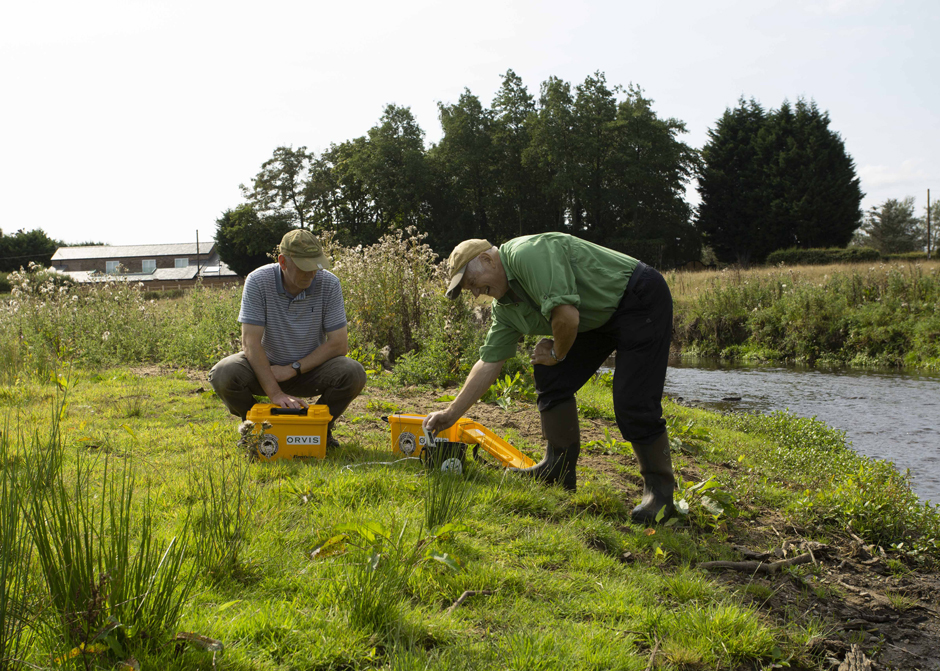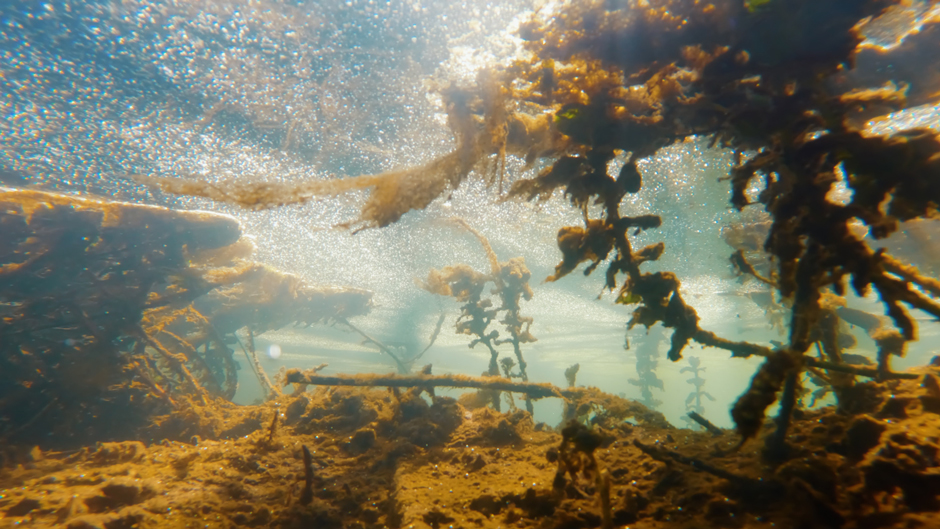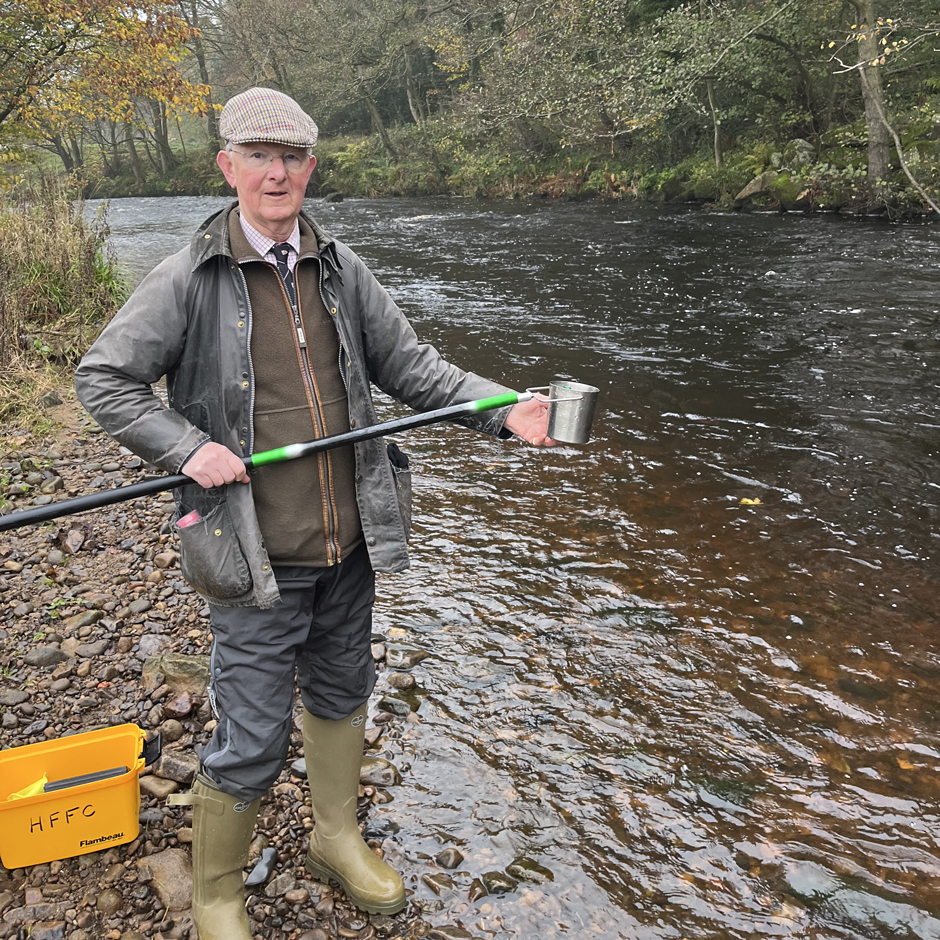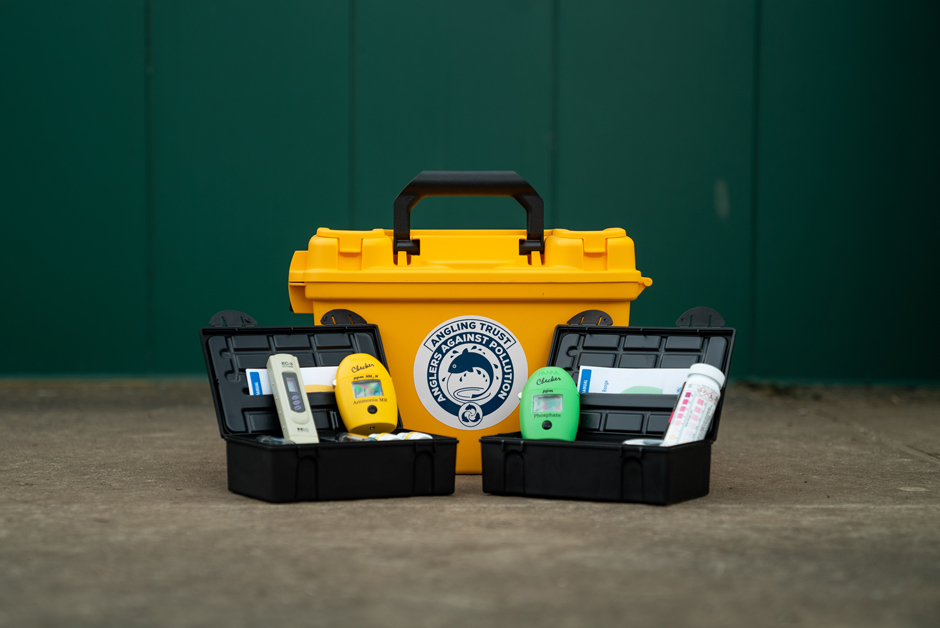Anglers Take the Lead: England’s Angling Trust Monitors Rivers and Streams
 Volunteers of the Angling Trust Water Quality Monitoring Network from Mottram St. Andrew’s Fishing Club test the water for signs of pollution. (Credit: Angling Trust)
Volunteers of the Angling Trust Water Quality Monitoring Network from Mottram St. Andrew’s Fishing Club test the water for signs of pollution. (Credit: Angling Trust)Rivers and streams are home to millions of aquatic organisms, from freshwater mussels to the most sought-after trophy fish. However, freshwater resources across the world have been impacted by increased rates of pollution in recent years as industry and urban centers expand. Pollutants like phosphates, nitrates, and ammonia flood waterways and impact the native fish community.
The Angling Trust is a not for profit organization, representing anglers, fighting for fish, fishing, and the environment in England. The organization oversees monitoring efforts in local rivers and streams in response to degradation and pollution.
The Impact of Small- and Large-Scale Pollution on Rivers and Streams
Stuart Singleton-White, Head of Campaigns for the Angling Trust, explains, “Major pollution incidents, such as failures at sewage treatment works or large slurry spills from farms, can have devastating effects. These sudden events can kill thousands of fish in a matter of minutes along affected river stretches—and they are happening far too often.”
Daily, small-scale discharges are causing long-term damage as well. Singleton-White shared data from the Environment Agency that reported storm overflows spilled for a total of 3.61 million hours last year, across 450,398 separate incidents.

An underwater shot of the River Pang chalk stream shows excessive algal growth caused by eutrophication from high levels of nitrates and phosphates in sewage pollution. (Credit: Angling Trust)
“This relentless assault on our waters reduces oxygen levels, harms invertebrate and plant life, and ultimately impacts fish populations,” states Singleton-White.
As a result of frequent pollution events, the Water Framework Directive reports that just 14% of water bodies in England have a good biological status, and 0% have a good chemical standard. Such poor water quality impacts the health of fisheries and leads to declines in fish populations.
Rivers and streams that once ran wild with fish have experienced dwindling numbers for decades, and the first to see and feel these losses were the anglers who spend more time on the water than almost anyone else.
Angler-Led Monitoring Efforts
Anglers feel these losses deeply. Having seen the rivers in their prime, anger amongst anglers who have lost the waters of their youth to pollution and preventable degradation is common. “But anglers don’t just complain—they act,” stresses Singleton-White.
Part of the actions being taken up in defense of these ecosystems are regular water quality monitoring efforts in over 200 rivers and streams across England for the past three years as part of the Anglers’ Riverfly Monitoring Initiative and the Angling Trust’s water quality monitoring network.

Rev. Brian Hunt, Chairman of Harrogate Fly Fishers’ Club, tests the water quality in the River Nidd. (Credit: Angling Trust)
The program builds off of decades of angler-led conservation. “Both the Angling Trust and Fish Legal evolved from the Anglers’ Conservation Association, founded in 1948 to fight pollution. Many local Rivers Trusts and much of the river restoration movement were also started by anglers—and still rely heavily on them today,” states Singleton-White.
Over 800 anglers take water sample kits with them out on their fishing trips to measure phosphate, nitrate, and ammonia, which give a strong indication of biological health and whether a water body is suitable for fish and other aquatic life.
The kits include handheld meters to measure phosphate and ammonia, test strips for nitrate, and temperature and electrical conductivity sensors, which can help indicate pollution. The system was designed with Cardiff University, and data is independently analyzed and published in an annual report.

A Water Quality Monitoring Network kit box from the Angling Trust, used to test for phosphates, nitrates, and ammonia – all indicators of pollution. (Credit: Angling Trust)
Data Use and Continued Angler Participation
While Singleton-White is clear that the data collected during these site visits may not be the final word on water quality, he believes that “it’s good enough to ask better questions of those who should be doing more.”
He continues, “Local clubs and anglers also use the data to campaign for improvements on their rivers. It’s a powerful tool for both national and local advocacy.”
The data makes a difference, sparking important conversations and conservation and resource management—all in hopes of changing current harmful practices and protecting fish habitats. Engagement extends outside of water companies and government entities as well, sparking grassroots change.

New volunteers of the Angling Trust Water Monitoring Network receive hands on training to use the water testing kit. (Credit: Angling Trust)
“Public concern about river pollution has never been higher—it was even a major issue in the general election. Anglers helped put it there. They’ve helped turn this from a niche issue into a national priority,” states Singleton-White.
According to Singleton-White, anglers participate in the program “because they care and have a deep love for rivers, lakes, seas—and for fish. This is personal for them.”
The Angling Trust’s water quality monitoring network is the largest citizen science network monitoring river water quality in England. “That alone is a major achievement,” states Singleton-White.
He concludes, “Our data has enabled us to put more pressure on the government, the Environment Agency, and the water companies. It’s helped angling clubs win improvements on their local rivers. It’s drawn significant media attention to the role anglers are playing in the fight for clean, healthy waters—and that spotlight has helped drive political change.”

Members of the Angling Trust Water Quality Monitoring Network and the Nidd Action Group test the River Nidd for signs of pollution. (Credit: Angling Trust)


0 comments